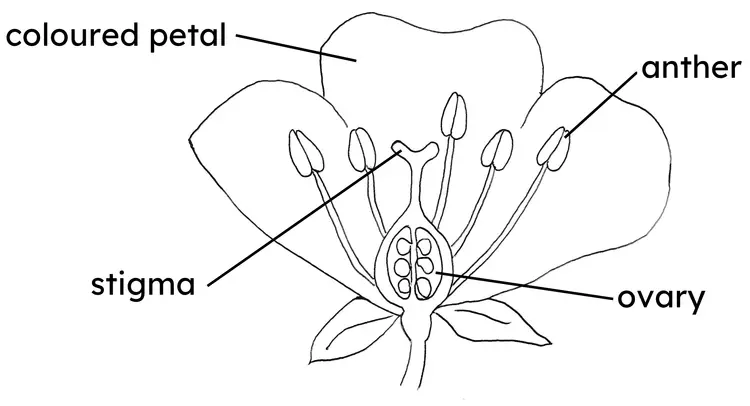Myths about teaching can hold you back
- Year 9
Pollination and fertilisation
I can describe the processes of pollination and fertilisation in flowering plants.
- Year 9
Pollination and fertilisation
I can describe the processes of pollination and fertilisation in flowering plants.
These resources will be removed by end of Summer Term 2025.
Switch to our new teaching resources now - designed by teachers and leading subject experts, and tested in classrooms.
These resources were created for remote use during the pandemic and are not designed for classroom teaching.
Lesson details
Key learning points
- Pollination is the transfer of pollen from the male anther to the female stigma.
- There are two types of pollination; self-pollination and cross-pollination. The latter increases variation in a species.
- Pollen grains can be transferred by the wind, water or by insects.
- Fertilisation is the fusion of the nuclei from the male and the female gametes.
- A zygote grows into an embryo and then a new plant.
Keywords
Pollination - Pollination is the process of transferring pollen from an anther to a stigma of a flower.
Ovary - The ovary is a female organ of the flower where ovules produce ova.
Style - The style holds the stigma and connects it to the ovary.
Stamen - The stamen is the male part of the flower, made up of an anther held up by a filament.
Fertilisation - The fusion of a male gamete (from pollen) and a female gamete (an ovum) is called fertilisation.
Common misconception
Pollen are seeds, or that seeds are not made by sexual reproduction.
Clearly show the difference between pollen as a gamete and the seeds as the offspring that grows into a new plant.
To help you plan your year 9 science lesson on: Pollination and fertilisation, download all teaching resources for free and adapt to suit your pupils' needs...
To help you plan your year 9 science lesson on: Pollination and fertilisation, download all teaching resources for free and adapt to suit your pupils' needs.
The starter quiz will activate and check your pupils' prior knowledge, with versions available both with and without answers in PDF format.
We use learning cycles to break down learning into key concepts or ideas linked to the learning outcome. Each learning cycle features explanations with checks for understanding and practice tasks with feedback. All of this is found in our slide decks, ready for you to download and edit. The practice tasks are also available as printable worksheets and some lessons have additional materials with extra material you might need for teaching the lesson.
The assessment exit quiz will test your pupils' understanding of the key learning points.
Our video is a tool for planning, showing how other teachers might teach the lesson, offering helpful tips, modelled explanations and inspiration for your own delivery in the classroom. Plus, you can set it as homework or revision for pupils and keep their learning on track by sharing an online pupil version of this lesson.
Explore more key stage 3 science lessons from the Reproduction in plants unit, dive into the full secondary science curriculum, or learn more about lesson planning.

Licence
Prior knowledge starter quiz
6 Questions
Q1.True or false? Plants can reproduce sexually.
Q2.What is the female gamete in a plant?
Q3.Flowers are the organs of a plant.
Q4.Which best describes fertilisation?
Q5.True or false? Gametes contain all the genetic information needed to produce offspring.
Q6.Match the word to its description.

where ovules produce ova
connects the stigma to the ovary
made up of an anther and filament
where pollen is deposited
makes pollen


